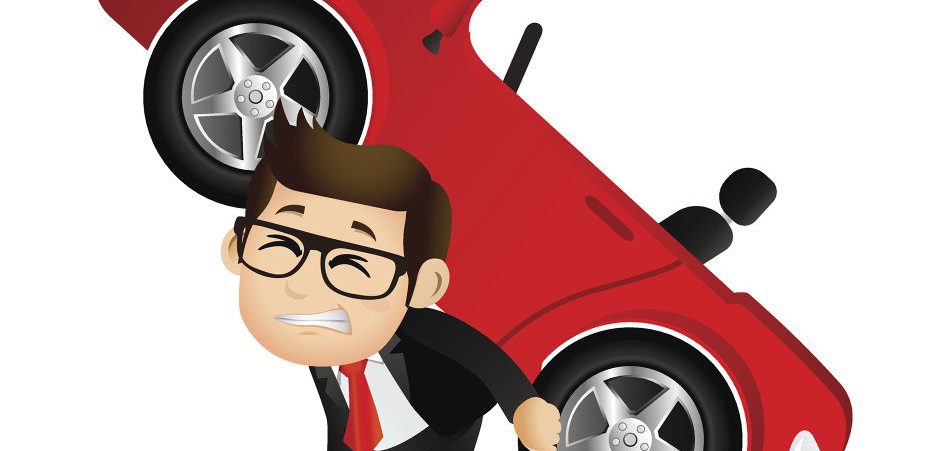6 Million Americans No Longer Making Car Payments
In November 2016, auto sales in the United States climbed more than expected, with the industry poised for a second straight year of record sales. This achievement comes with one small caveat. The number of subprime auto loans that have raced into delinquency hit their highest levels in the third quarter, with roughly six million individuals at least 90 days late on their payments.
This situation has echoes of the U.S. housing crash.
In November, U.S. auto sales rose at a seasonally adjusted annual rate of 17.87 million. Analysts had estimated that auto sales would rise at a rate of 17.7 million. Sales in 2016 have been boosted in part by dealership incentives. (Source: “US auto sales jump more than expected in November,” Business Insider, December 1, 2016.)
But it takes more than incentives to generate two consecutive years of record sales. The artificially low interest rate environment could be said to be an even greater impetus behind increased sales.
Auto loan balances soared by $32.0 billion in the third quarter to $1.35 trillion; the biggest jump in U.S. auto loan originations in history. In the third quarter of 2016, the average used-car loan reached a record of $19,227. (Source: “Quarterly Report on Household Debt and Credit,” Federal Reserve Bank of New York, last accessed December 12, 2016.)
Putting more people in the driver’s seat has come at a cost though. Six million Americans have stopped making car payments. And even the New York Fed says it’s becoming a significant concern.
Auto loans to borrowers with credit scores under 660 have nearly tripled since the end of 2009. Approximately $50.0 billion in new auto loans per quarter have gone to those with credit scored under 660. About $30.0 billion in each quarter has gone to those with scores below 620.
While the majority of auto loans may be still doing fine, subprime loans, or those with credit scores below 620 are not. In fact, subprime borrowers are behind on auto loan payments at the highest rate in six years.
About six million people with subprime credit scores are now at least 90 days past due on their payments. The outstanding subprime auto loan balances currently stand at a record $280.2 billion. In the fourth quarter of 2007, it was at a pre-Financial Crisis high of $249.5 billion.
This is troubling for a couple reasons. First, on a basic level, if cars are repossessed, people may not be able to get to work, get groceries, or do normal everyday things that help the U.S. economy chug along. That is currently the status of six million Americans. Keep in mind, this is just the number of people with their names on the loans; it doesn’t include the complete number of people this will affect. Many of those borrowers have partners, children, or other dependents.
2009 Subprime Mortgage Crisis a Distant Memory
Second, in a nod to the subprime mortgage crisis that helped send the U.S. into the Great Recession way back in 2009, lenders are repackaging these vulnerable auto loans as bond-like asset-backed high-yield securities.
Thanks to ballooning loan volume and soaring delinquencies, subprime auto securities could tank in much the same way that subprime mortgage bonds did before the financial crisis.
As a result, auto finance companies that specialize in subprime lending, as well as banks with exposure to subprime loans, will most likely take a serious hit to their auto loan portfolios.
After the financial crisis, mortgage lenders have been required to verify that applicants can repay their debt. This logic has not made its way to the auto industry. And it’s not as if lenders aren’t going to take advantage of this loophole. Subprime mortgage lending may have fallen since the financial crisis, but subprime auto lending has soared.
According to research from the Federal Reserve of New York, only 5.2% of auto loan applications were rejected in the 12 months ended June 2016. That is down sharply from 11.1% in the 12 months ended October 2015. (Source: “More Americans Falling Behind on Car Loan Payments, S&P Says,” Bloomberg, October 12, 2016.)
Admittedly, a meltdown in subprime auto lending will not send the U.S. tailspinning into another Great Recession like subprime mortgage lending did. After all, it’s easier to repossess a car and sell it than a distressed house.
And yet, the Fed staff is still sounding the alarm. It’s hard not to see a comparison between subprime auto loans and subprime mortgages. Like the Fed, investors should keep a close watch on auto loan delinquency rates.






